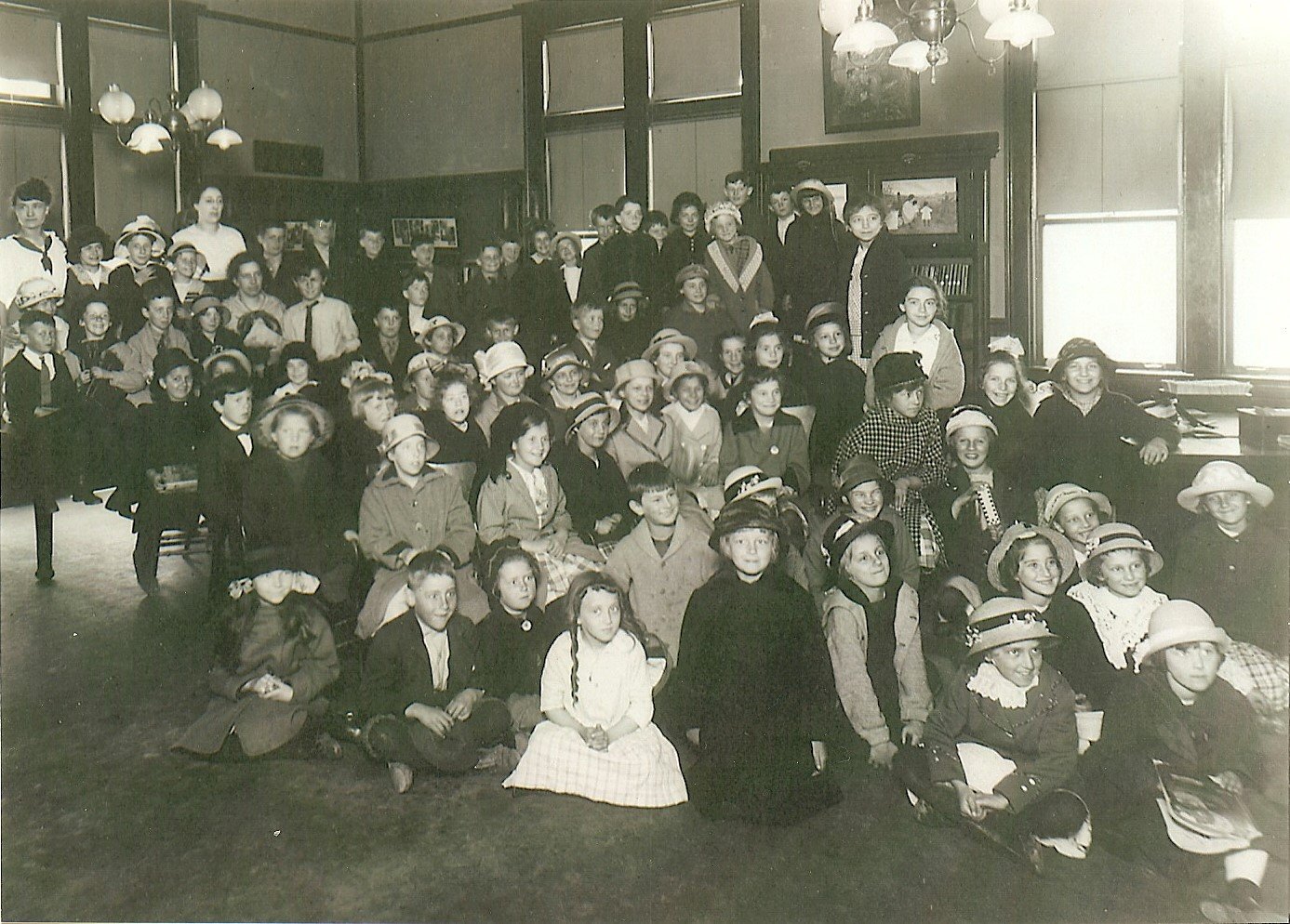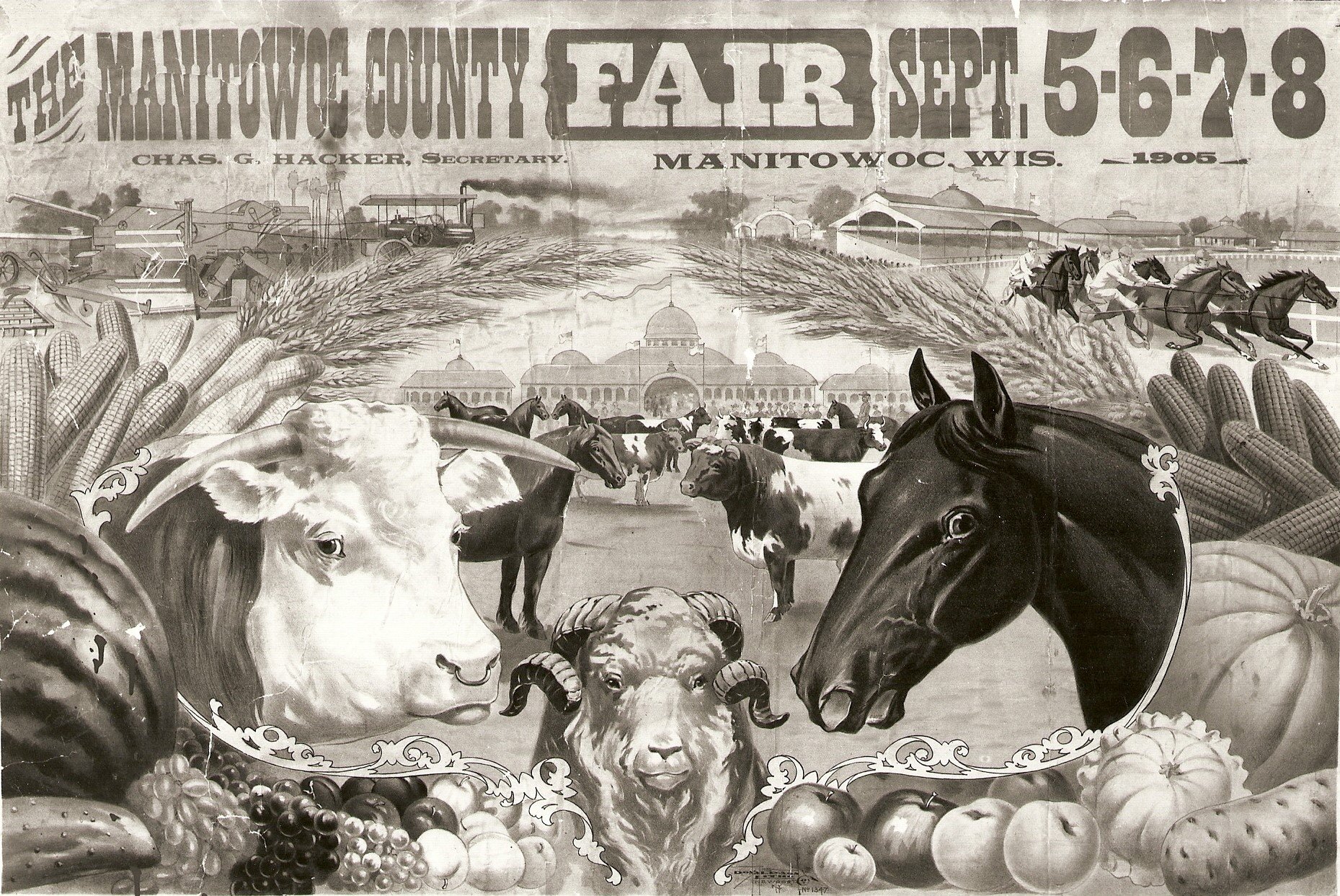Preserving the Past:
Stories from the Archives Blog
Manitowoc's Turner Hall
“She was first a theater and then a motion picture house. The joys and sorrows of the City of Manitowoc were reflected in her owlish windows.”
“They signed the contract one day. On the very next day the wrecking crews moved in and in no time at all an ancient landmark of the City of Elevators was reduced to rubble and dust.”
The Pfister & Vogel Company Tannery at Two Creeks, 1861-1877
Like the Wisconsin Leather Company’s tannery at Two Rivers, nothing remains of the Pfister & Vogel tannery at Two Creeks. The tannery burned in 1885 and a devastating fire in 1918 destroyed much of what remained of the once prosperous village of Two Creeks. Today, part of the site of the early tannery settlement is a town park.
Lillian Chloupek: Leader in Eduation
In Chloupek’s first year as Superintendent in 1920, Manitowoc County had 110 school districts and 142 teachers. The total enrollment of all schools, both public and private, was 4,161 students. Most schools had enrollments of 25 to 35 students, while 2 had over 56 children in attendance. She was reelected for another 2 terms as County Superintendent.
St. Boniface Church in Manitowoc stands tall since 1880s
The steeple of Saint Boniface Catholic Church, at South 10th and Marshall streets in Manitowoc, has been a familiar Manitowoc landmark since 1886, when the current Gothic brick church was built. Saint Boniface Parish was founded in 1853 as a mission of the Maternity of the Blessed Virgin Mary Church at Manitowoc Rapids. When Father H. J. Nuyts noticed the population trend was veering away from Manitowoc Rapids and towards the village of Manitowoc, he proposed the organization of the parish in the bustling new village.
Manitowoc's Lueps Island
The development of these 36 acres of land mirrors the changes in our community. It tells the story of our early settlement, the rise and fall of the railroads, the importance of shipbuilding to Manitowoc County, the resolve of our nation during war time, and a commitment to hard work and innovation that has followed us throughout our history.
Manitowoc men survived tragic Iroquois Theater fire in Chicago
Fred and Edwards’ story intersect with the deadliest theater fire in American history. The Iroquois Theater fire killed more than 600 people, but Manitowoc’s Bahr family survived to grow their lives in our community.
Charles Rieck: Last Surviving Civil War Veteran in Manitowoc County
When the war ended in 1865, Charles Rieck, who had served nearly three years, received an honorable discharge and returned home. Finding it difficult to settle down to farm life, he went to work in the coal mines of Pennsylvania and the lumber mills at Menominee, Michigan. Upon his return, he worked as a carpenter and cabinet maker.
1936-1937 Collapse of the Tannery Bridge Caused Controversy
The closed bridge prevented students living west of the river in School District No. 2 from reaching the Tannery School, east of the river, except by a distant route – a tremendous inconvenience for rural residents. The bridge, near the northern limits of the city of Two Rivers, was in the west half of Section 25, Township 20 North, Range 24 East.
The End of the World, 1899
It all started at a barber shop at the corner of Eighth and Franklin streets in Manitowoc. In between the snips of his scissors, barber John Hoyer spread the news about the upcoming doomsday; October 13th, 1899. As townsman Fred Rouelle expressed, some folks were saying “we are all about to be blown to smithereens-right off the Earth.”
The White House Milk Company
The White House Milk Company, once located at 102 Revere Drive in Manitowoc was once among the largest producers of evaporated milk in the country. The plant was reported to be able to process a million pounds of milk in a day and crank out 500 cans of evaporated milk per minute.
Immigrants to Manitowoc: William Rahr
“We were not long strangers here. The prevalence of our German element and our language, the hearty reception from upright countrymen, allowed us to feel no longer strange, but calmer and more content. We had finally found a place for our fireside.”
Hika Bay Tavern
Now called the Hika Bay Tavern, the building was bought by Hugo Schurrer in 1899. Schurrer immigrated to America in 1885 from Germany at the age of 18. He was involved in the banking profession in his homeland but upon settling in the Cleveland area, Schurrer began to work for the Lake Shore Railway, earning eighty cents a day. He then decided to go into a different occupation and went to work in a tavern in the nearby community of St. Wendel.
Early aluminum pioneers were ‘frenemies’
One of the lesser known but significant aluminum pioneers was German immigrant Conrad Werra who in 1896 founded the Two Rivers Iron Works and made castings from iron, brass, bronze and eventually aluminum.
Henry Vits Monument Dedicated 95 Years Ago
Besides being one of Manitowoc’s most prominent and successful businessmen, Henry Vits served as Manitowoc postmaster (1894-1898) and a member of the state legislature, county board of supervisors, city council, school board, park commission and county asylum board of trustees. He helped organize the Manitowoc Gas Co. and Manitowoc Mutual Fire Insurance Co. He was an active member of the Odd Fellows and Concordia Singing Society.
“Books and Newspapers are the Great Teachers”
M. Fellows, the President of the Jones Library Association stated, “In this age, books and newspapers are the great teachers. They bring us face to face with the best and wisest minds of the present and the past; we live again in their days, and thus a double live is given us – one of the present, and one of the past.”
G. V. Nash’s An Illustrated Historical Atlas of Manitowoc County
During the 1870s, G. V. Nash actively compiled and published county maps. In 1873, he assisted E. M. Harney compile maps of Racine, Kenosha and Winnebago counties. Harney published a wall map of Manitowoc County in 1872. Nash collaborated with others on maps of Washington and Ozaukee (1874), Juneau and Portage (1876) and Pierce (1878) counties. Nash & Morgan’s Sectional Map of Wisconsin was published in 1878.
Horse Racing at the Manitowoc County Fair
The 1894 Manitowoc County Fair’s Official Score Card highlighted the gambling aspect of the horse races: “If you want to be sure of placing your money on the winning horse at the races during the fair, you can do so by calling at The Senate, 806 York Street, Carl Hansen, Proprietor. Head quarters for sporting events during the fair.”
The History of the Manitowoc County Fair
In 1926 at the Convention of Fair Board in Milwaukee, F.C. Borcherdt declared that Manitowoc’s fair was the “blue ribbon fair of Wisconsin” because more registered cattle were exhibited at the Manitowoc fair than at any other county fair in Wisconsin. The Manitowoc County Fair continues to hold the title of the “blue ribbon fair of Wisconsin.”
Kettle Range Rural School Soon To Be Razed
Local residents should take some comfort knowing the old school served generations of rural children well. An old large black maple tree, possibly planted when the brick school was built, remains in the school yard. If only it could tell us all the stories of when the children sat and played beneath its spreading branches in the cool shade.
Herman Benke, A Legacy of Photos
It was a love of photography that led Hermann C. Benke (also spelled Behnke) to capture Manitowoc County and the surrounding communities unlike anyone else at the turn of the 20th century. Chances are if you’ve seen a photo from that time period, it’s probably a Benke photo postcard.





















